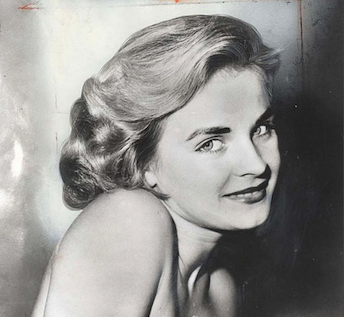TRIGGER WARNING: This article contains information about sexual assault and violence which may be triggering to survivors.
Our August book pick, Still Lives, explores how society treats violence against women. While writing the novel, author Maria Hummel spent a great deal of time researching the lives and deaths of female victims—and this didn’t come without side effects. Here, she talks about her experience reading and writing about famous* female homicides.

1. First, her photo lodges in your mind. Most of the time she is smiling, posed, with an almost pin-up prettiness, though sometimes the pictures are candid and sweet, as in Laci Peterson, pregnant in her shiny red dress and Christmas-ornament necklace.
2. You sicken at the stats of her murder, the investigation, the trial (if there’s a trial), the outcome. Sometimes you go down a long rabbit hole with the investigation, if there are false leads, liars, or multiple victims of the same killer.
3. Stabbed women and savage men appear in your dreams, and you wonder why you chose this topic because it is making you suspicious all the time.
4. You feel like you’re committing some nameless secondary crime, reducing a human’s full life to the brief, gory tale of its end. You realize that you—like everyone else—find it so easy to make the murderer the story’s automatic protagonist, and not her.
5. So you dig up what you can about her biography. It’s remarkably hard to find. Most peddlers of true crime are interested most in the homicides, and their readers are, too. Take the murderer Harvey Glatman, a.k.a., the Glamor Girl Slayer, and his young L.A. victim, Judy Ann Dull. A few clicks lead you to pictures of Judy Ann Dull tied up clothed, then naked, gagged, and trussed to an X of wood, her head hanging. Alongside the pictures run the excruciating accounts of Glatman driving Dull out to the desert and raping and killing her. The text mentions her age: nineteen.
6. It takes you more research to discover that Judy Ann Dull was a mother, in an expensive custody battle for her daughter, and she needed the $20 that Glatman had promised her in exchange for a gig posing for the cover of a pulp novel.
7. As you ponder this situation, you realize that Dull not only required money, she required discretion. No way could Dull’s estranged husband find out about her tawdry photo shoot. No way could she show up to court scratched or bruised, which made running away from the increasingly creepy Glatman hard for her to do.
8. In short: Motherhood was at stake in every decision that Judy Ann Dull made that day.
9. That Dull’s choices as a mother ended her life is something you arrive at late, long past the images of her beauty and her torture, and the dark, festering fear that human beings can be so evil, and killers are out there right now, looking for victims.
10. Dull’s daughter’s was named Susan or Suzanne. She was fourteen months old. You know that Susan would have been too young when her mother died to consciously remember her, except for some deep vestigial sense of being held, and held no more, not as long as she lived.
*By “famous,” I mean that the victim is widely known because of her death. She is also most likely beautiful, white, cisgender, abducted or raped or violently dismembered, and though the murderers range from strangers to husbands, 99% are men.



